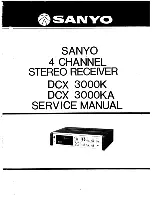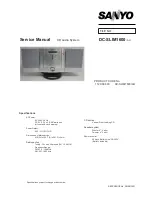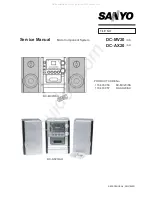
21
tiometer scaling: the lower the frequency, the brighter and clearer sounds
the programme material. This is because the M
ID
-H
I
T
UNE
control sets a
starting frequency above which all frequencies are processed. If this star-
ting frequency is lowered, the frequency spectrum included in processing
increases. The programme material then sounds brighter and clearer.
Turning the control to the left shifts the starting frequency from 3.5 kHz
to higher frequencies. The programme material then sounds increasingly
dull, because fewer and fewer frequencies are being included in the
process, the higher the frequencies become. The setting you choose is a
matter of personal taste.
A section within the V
ITALIZER
with one of the most decisive influences on
the sound is P
ROCESS
control. If you continue to turn the P
ROCESS
control up,
more of the signal is added to the B
ASS
and M
ID
-H
I
T
UNE
sections whilst
dominant mid frequencies are reduced according human hearing at the
same time. The below sections contain more detailed information on this
aspect. Familiarize yourself with the sound changes before deciding on the
setting which sounds best.
We shall now turn our attention to the H
ARMONICS
control. Note the
improved detail in the high frequency range, the further you turn the
control in. In practice, values between 4 and 6 have proved to be the most
common.
The harmonics are accentuated by the V
ITALIZER
with equalizer techno-
logy, unlike other procedures. Previously, so-called »Exciters«, devices to
generate harmonic tones, produced their harmonics with the aid of a gene-
rator which mainly added type K3 and type K5 distortions to the signal
(odd harmonics of 3rd and 5th order). The familiar disadvantages of this
principle are as follows: although odd harmonics do add to the brilliance of
the audio signal to a significant degree, they tend to be somewhat sharp,
which leeds to hearing fatigue for listeners. Another pitfall is that the distor-
tions added were not part of the original signal.
The V
ITALIZER
accentuates the harmonics which are also part of the
original signal! The H
ARMONICS
filters are designed in such a way that even
and odd harmonics (K2, K3, K4, K5...) are accentuated equally. This makes
the processed signal more natural with a soft, silky-sounding top-end.
Once you have selected the setting for the harmonics control you can sit
back to listen to the new sound image.
Switch A
CTIVE
off to return to the original signal. If you now say »I don't
believe that« or »Booh«, you belong to the overwhelming majority of
those people who have ever heard a V
ITALIZER
. It was this sound impression
which led to V
ITALIZER
technology winning awards like the »Golden Ear«
from Europe's biggest »Audio« magazine for the most innovative product
in 1993.
4. The P
ROCESS
control
It defines the process ratio
between the B
ASS
and M
ID
-H
I
T
UNE
section and the dry signal.
5. The H
ARMONICS
control
Introduction into the VITALIZER
®










































